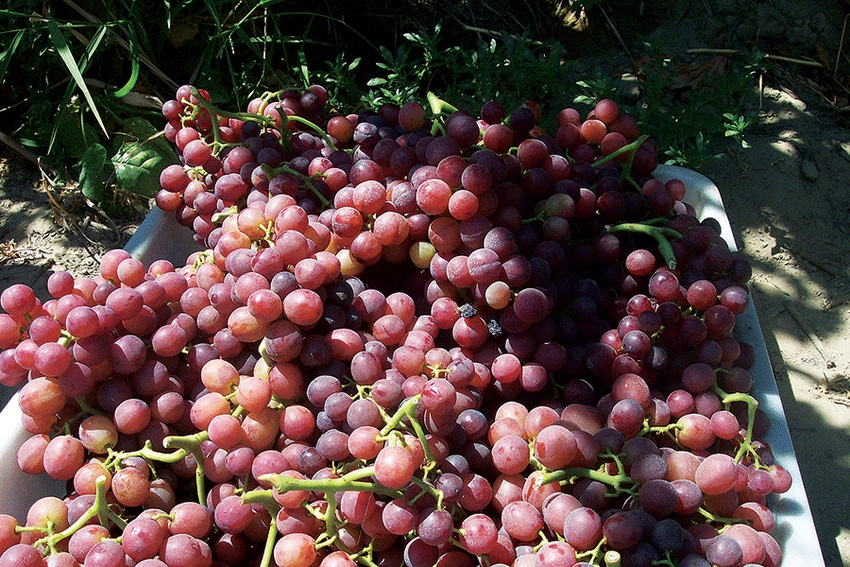
Rising labor costs complicate the ability of table grape farms to turn a profit with new plantings, suggests a new set of cost studies from the University of California’s Agricultural Issues Center.
Of the four hypothetical 500-acre farms in the southern San Joaquin Valley with vineyard establishment on 40 acres, only the late-maturing Autumn King and the mid-season maturing Scarlet Royal variety turns a slight profit in its first year of commercial production.
The others — early-season Flame Seedless and Sheegene-21 — finish their first productive seasons in the red, according to the UC calculations.
The new estimates come as reduced labor availability, increases in minimum wage rates, and new overtime rules promise to push grower costs higher, says Ashraf El-kereamy, UC Cooperative Extension viticulture advisor in Kern County and co-author of the cost studies.
NEW WAGE RULES
Under a bill signed by Gov. Jerry Brown in 2016, California’s minimum wage will increase $1 an hour each year until it reaches $15 an hour in 2022. The current minimum wage is $11 an hour.
Meanwhile, legislation in 2016 by Assemblywoman Lorena Gonzalez, D-San Diego, will gradually reduce the farmworker overtime threshold on most farms to 8 hours a day and 40 hours a week by 2022. The previous threshold was 10 hours in a day and 60 hours a week.
“We included detailed costs for specialized hand labor of certain cultural and harvest operations,” El-kereamy says in a news release. The studies assume hourly wages of $13 for machine operators and $11 for non-machine labor. With federal and state payroll taxes and worker’s compensation insurance added in, the actual costs per employee are estimated at $18.27 and $15.46 per hour for machine labor and non-machine labor, respectively.
The studies take into account every conceivable cost that a farm could incur, including site preparation and planting, pruning, irrigation, fertilizers and pest treatments, vehicle and equipment costs, property taxes, and insurance. Each study tracks the costs of the hypothetical vineyard from planting through its third year, which is its first productive year.
COSTS/PROFITS
The Autumn King variety shows a profit per acre above cash costs of $1,571, while the Scarlet Royal ekes by with a $6 per acre profit margin in its first productive year. The hypothetical Flame Seedless planting finishes its third year with $1,082 in net cash costs per acre for the year, while the Sheegene-21 planting posts $1,052 in net cash costs per acre in its third year, according to the studies.
The sample costs for labor, materials, equipment and custom services are based on January averages. A blank column titled “Your Cost” is provided in each study for growers to enter their own estimated costs.
The Agricultural Issues Center released the studies to help table grape growers make decisions on which varieties to grow. Grapes are among many commodities for which the UC periodically calculates costs and returns. Others include alfalfa and other hay varieties, almonds, beef, corn, olives, pistachios, prunes, rice, walnuts, and various fruits and vegetables.
The previous studies for table grapes were done in 2007. That year, Flame Seedless grapes were calculated to return a $177 peracre profit in their first year of production, with wages estimated at $11 an hour for machine operators and $8.50 per hour for non-machine workers.
MORE ADJUSTMENTS
Wages for farmworkers have already been trending above the minimum in recent years, but the tightening agricultural overtime rules are causing growers to make more on-farm adjustments, Agricultural Issues Center Director Daniel Sumner recently told Western Farm Press.
Labor costs were a big factor in the AIC’s recently-released new cost studies for dry-on-the-vine raisin production using the open gable and overhead trellis systems. Among the findings was that total costs of non-machine labor on a hypothetical raisin farm in 2016 were $1,240 per acre — more than double the $586 per acre in 2003.
About the Author(s)
You May Also Like






